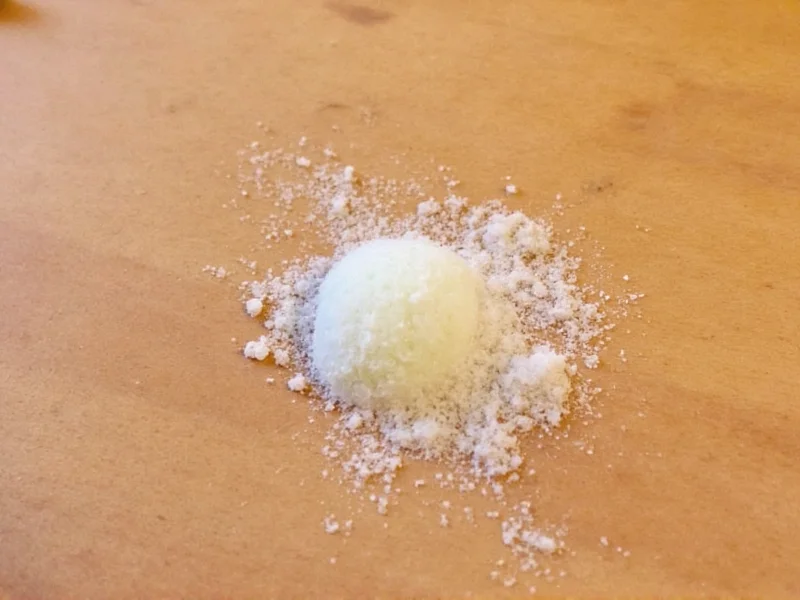Understanding onion conversions is essential for successful recipe adaptation. When substituting onion powder for fresh onions, you're working with a concentrated form that lacks moisture but delivers intense flavor. The standard conversion ratio provides a reliable starting point, though several factors can influence the exact measurement needed.
Why Onion Powder Conversions Matter
Chefs and home cooks frequently face situations where fresh onions aren't available or practical. Onion powder offers convenience and shelf stability, but improper substitution can ruin dishes. Unlike fresh onions which are 89% water, onion powder contains virtually no moisture, making volume measurements deceptive without proper conversion.
Comprehensive Onion Conversion Chart
| Fresh Onion Measurement | Onion Powder Equivalent | Weight Equivalent |
|---|---|---|
| 1 small onion (½ cup chopped) | 1½-2 tablespoons | 10-15g |
| 1 medium onion (1 cup chopped) | 2-3 tablespoons | 15-20g |
| 1 large onion (1½ cups chopped) | 3-4 tablespoons | 20-25g |
| 2 medium onions (2 cups chopped) | 4-6 tablespoons (¼-⅓ cup) | 30-40g |
| 3 medium onions (3 cups chopped) | 6-9 tablespoons (⅓-½ cup) | 45-60g |
Factors Affecting Onion Powder Conversion Accuracy
Several variables impact the precision of onion powder substitutions:
Onion Size Variability
"Medium" onions range from 5-8 ounces (140-225g). Larger onions contain more water, requiring slightly more powder for equivalent flavor. When precision matters, weigh your onions or use cup measurements for chopped onions rather than counting whole onions.
Moisture Content Differences
Fresh onions' water content varies by season and storage conditions. Spring onions contain more moisture than fall-harvested varieties, potentially requiring 10-15% more powder for equivalent flavor intensity.
Powder Quality and Processing
Commercial onion powders differ in concentration. Some brands use lower-temperature dehydration that preserves more volatile compounds, requiring less powder. Artisanal powders may be more potent than mass-produced varieties. Always taste as you go when substituting.
Practical Substitution Guidelines
Follow these professional techniques when replacing fresh onions with powder:
Liquid Adjustment Protocol
For every ¼ cup of onion powder substituted, reduce other liquids in your recipe by 2 tablespoons. This compensates for the missing moisture from fresh onions. In sauces and soups, this adjustment prevents thinning; in baked goods, it maintains proper texture.
Flavor Layering Technique
For complex dishes, use 75% of the calculated powder amount initially, then adjust during cooking. Add half at the beginning for foundational flavor, and the remainder near the end to preserve volatile compounds that degrade with prolonged heat exposure.
Reconstitution Method
For applications requiring texture (like salsas or relishes), reconstitute powder by mixing 1 tablespoon with 2 tablespoons warm water per medium onion equivalent. Let sit for 10 minutes before using. This creates a paste that mimics fresh onion texture while delivering concentrated flavor.
When to Avoid Substitution
While onion powder works well in many applications, certain dishes require fresh onions for proper texture and moisture:
- Raw applications like salads and fresh salsas
- Dishes where onion texture is integral (French onion soup, caramelized onion tarts)
- Recipes specifically designed around fresh onion's water content (some breads and doughs)
Common Substitution Mistakes
Avoid these frequent errors when converting between fresh onions and powder:
Volume-for-Volume Substitution
Using equal volumes (1 cup fresh = 1 cup powder) creates overwhelmingly strong, bitter dishes. Remember that dehydration concentrates flavor compounds 6-8 times.
Ignoring Recipe Stage
Adding all powder at the beginning of long-cooked dishes causes flavor degradation. Onion powder's volatile compounds break down after 30+ minutes of simmering.
Neglecting Salt Content
Many commercial onion powders contain anti-caking agents with salt. When substituting, reduce added salt by ¼ teaspoon per 2 tablespoons of powder used.











 浙公网安备
33010002000092号
浙公网安备
33010002000092号 浙B2-20120091-4
浙B2-20120091-4